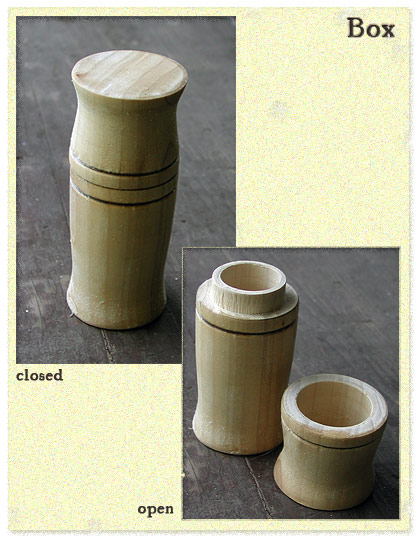

 |
The barber-surgeon of the Mary Rose most likely stored ointments in them. A German illustration from 1425 shows such a canister being turned on a pole lathe. This type of wooden container was used in pharmacies/chemists into the early years of the 20th century. The canister pictured is of poplar and stands less than four inches
high. It's finish is linseed oil, turpentine and beeswax; inside
is unfinished wood (and poplar is not toxic) so it can be used for
storage of dry food items.
*The pole lathe was commonly used at that time. |